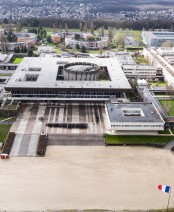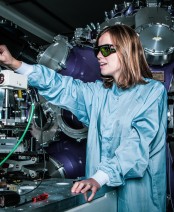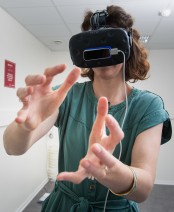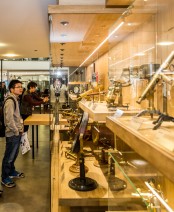Neutrino quantum oscillations makes the cover of Nature
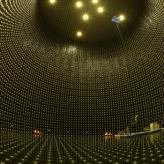
 Kamioka Observatory, ICRR (Institute for Cosmic Ray Research), The University of Tokyo
Kamioka Observatory, ICRR (Institute for Cosmic Ray Research), The University of Tokyo
The T2K experiment in Japan studies neutrinos and antineutrinos with the aim of better understanding the domination of matter over antimatter. By compiling data between 2010 and 2018, the researchers discovered what appears to be a strong violation of the CP (Charge-Parity) symmetry in neutrino oscillations. In other words: neutrinos and antineutrinos do not behave in the same way. This discovery makes the front page of the prestigious scientific journal Nature this Thursday, April 16.
These results involves an international collaboration of more than 500 researchers, including the research team of Michel Gonin, CNRS Director of research at Leprince Ringuet Laboratory * and national manager of the french participation in T2K experiment.
Asymmetry to understand the origin of our Universe
In our universe, nebulae, stars, planets are made of metter : antimatter is absent. However, scientists consider that at the time of the creation of the universe, matter and antimatter were created in excactely the same quantity. If we stick to the laws of physics which give a symmetrical description of the behavior of matter and antimatter in most phenomena, we should find today as much of one as the other (or even neither if they meet and annihilate by forming photons).
One way to explain the dominance of matter over antimatter is the violation of CP symmetry which has so far only been demonstrated for quarks but with too little magnitude. This discovery made today on neutrinos in the T2K experiment could thus solve a fundamental enigma: the absence of antimatter in our universe.
A monumental experience
T2K which means “Tokai to Kamioka” studies the neutrinos produced thanks to a proton beam generated by a particle accelerator based in Tokai. The protons emitted at Tokai are directed towards a carbon target. The impact produces "pions" which decay into "muons" and muon neutrinos when passing through a 100-meter tunnel which points underground to the Super-Kamiokande detector 280km away. From there, the beam passes through the earth and is thus cleaned: only neutrinos can circulate through our planet without being deflected. They are then detected indirectly by a light which manifests their passage through the Super-Kamiokande detector. This giant underground detector is a cylinder (40m diameter and 40m height), filled with 50,000 tonnes of pure water and surrounded by around 11,200 photomultipliers (picture above).
Unprecedented results
By acting on particles thanks to electromagnetic fields before they enter the Tokai tunnel, scientists are able to select those that will give neutrinos or antineutrinos. They can then study their “oscillations”, that is to say the "transformation" of muonic neutrinos (and muonic antineutrinos) into electronic neutrinos (and electronic antineutrinos). By making more than 10^21 proton collisions on the target, the researchers were able to detect enough events to reveal the violation of symmetry.
The parameter ? considered as an angle, corresponds in theory the degree of asymmetry between matter and antimatter. If it is equal to 0 or 180 °, there is no asymmetry. The asymmetry is maximum if this parameter is equal to -90 ° for neutrinos (+ 90 ° for antineutrinos). The T2K results exclude for the first time almost half of the possible values at 99.7% (3?) and the value most compatible with the data is very close to 90 ° corresponding to a maximum asymmetry between matter and antimatter.
These results are made possible by the accumulation of a large amount of data, but also by the improvement of analysis techniques to reduce background noises. The work of T2K international community is beginning to reveal a fundamental property of neutrinos that has not yet been demonstrated.
The future: the Hyper-Kamiokande experience in Japan
A new generation of experiments should increase the production of data in the coming decades. In Japan, the Hyper-Kamiokande experiment, the successor to Super-Kamiokande, whose construction has just been initiated, will be operational around the years 2027-2028. If their new data confirm the preliminary results of T2K, the neutrinos could well bring before ten years an answer to the problem of the disappearance of antimatter in our Universe.
An opportunity for X students
For many years, students from the École Polytechnique have been able to complete their internship and PhD’s in Michel Gonin’s team and thus participate in a major experiment in particle physics. This research training gives them international experience and allows them to familiarize themselves with the highest level analysis techniques necessary to understand the data collected. Currently, three students are doing their internship on the T2K experience.
Chevalier de la Légion d’honneur and most recently Chevalier de l’ordre des Palmes académiques, Michel Gonin is also a professor of physics and director of the admissions at the École Polytechnique.
Learn more : DOI: 10.1038/s41586-020-2177-0 / Nature Vol. 580, pp. 339-344
*(LLR, a joint research unit CNRS – École Polytechnique)
